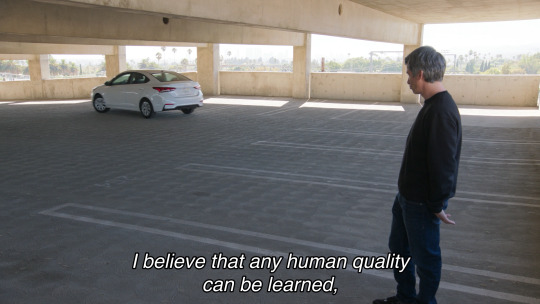Text
youtube
once again thinking about sufjan making himself tear up while sing this damn song...
1 note
·
View note
Text






The Rehearsal Season 2 Episode 2: Star Potential
277 notes
·
View notes
Text

Western Screech Owl (Megascops kennicottii), family Strigidae, order Strigiformes, CA, USA
photograph by Midhun Thomas
3K notes
·
View notes
Text
Child's Sock from Egypt, c.250-350 CE: this colorful sock is nearly 1,700 years old

This sock was discovered during excavations in the ancient city of Oxyrhynchus. It was likely created for a child during the late Roman period, c.250-350 CE.
Similar-looking socks from late antiquity and the early Byzantine period have also been found at several other sites throughout Egypt; these socks often have colorful, striped patterns with divided toes, and they were crafted out of wool using a technique known as nålbinding.

Above: a similar child's sock from Antinoöpolis, c.250-350 CE
The sock depicted above was created during the same period, and it was found in a midden heap (an ancient rubbish pit) in the city of Antinoöpolis. A multispectral imaging analysis of this sock yielded some interesting results back in 2018, as this article explains:
... analysis revealed that the sock contained seven hues of wool yarn woven together in a meticulous, stripy pattern. Just three natural, plant-based dyes—madder roots for red, woad leaves for blue and weld flowers for yellow—were used to create the different color combinations featured on the sock, according to Joanne Dyer, lead author of the study.
In the paper, she and her co-authors explain that the imaging technique also revealed how the colors were mixed to create hues of green, purple and orange: In some cases, fibers of different colors were spun together; in others, individual yarns went through multiple dye baths.
Such intricacy is pretty impressive, considering that the ancient sock is both “tiny” and “fragile."
Given its size and orientation, the researchers believe it may have been worn on a child’s left foot.

Above: another child's sock from Al Fayyum, c.300-500 CE
The ancient Egyptians employed a single-needle looping technique, often referred to as nålbindning, to create their socks. Notably, the approach could be used to separate the big toe and four other toes in the sock—which just may have given life to the ever-controversial socks-and-sandals trend.
Sources & More Info:
Manchester Museum: Child's Sock from Oxyrhynchus
British Museum: Sock from Antinoupolis
Royal Ontario Museum: Sock from Al Fayyum
Smithsonian Magazine: 1,700-Year-Old Sock Spins Yarn About Ancient Egyptian Fashion
The Guardian: Imaging Tool Unravels Secrets of Child's Sock from Ancient Egypt
PLOS ONE Journal: A Multispectral Imaging Approach Integrated into the Study of Late Antique Textiles from Egypt
National Museums Scotland: The Lost Sock
4K notes
·
View notes
Text

‘Hands weaving magnetic-core memory, IBM, Poughkeepsie, New York,’ 1956. Photograph by Ansel Adams.
This photograph was made on a commercial assignment for IBM.
2K notes
·
View notes
Text

The state of my heart
537 notes
·
View notes
Text

Aurora has found a vanilla latte.
In Tavistock, in Devon, England.
46 notes
·
View notes
Photo


New growth on a West Himalayan fir.
Abies pindrow.
83 notes
·
View notes
Text

Black swallowtail larva enjoying dill plant
Photo: Anne DuPont
188 notes
·
View notes
Text

a) I don't know if it comes through in photos but I am obsessed with the luster of this gulf coast native fleece b) lest the casual viewer be led to believe I only spin chunky & inconsistent
104 notes
·
View notes
Text
She is a freaking mastermind..
Victoria secret sound in snow on the beach
I'm never going to recover
756 notes
·
View notes






